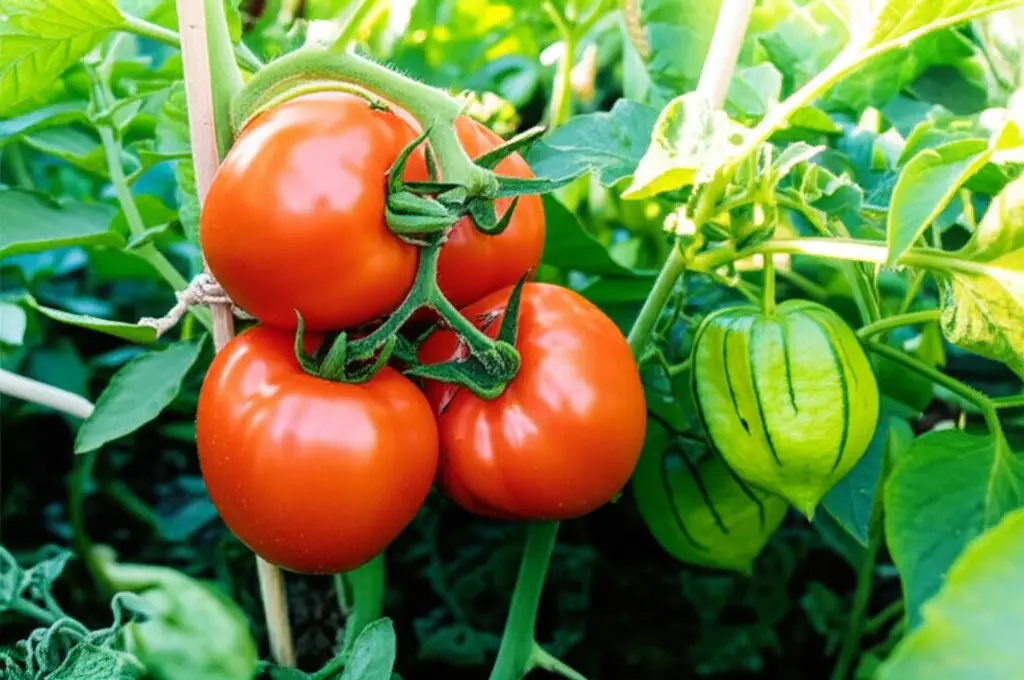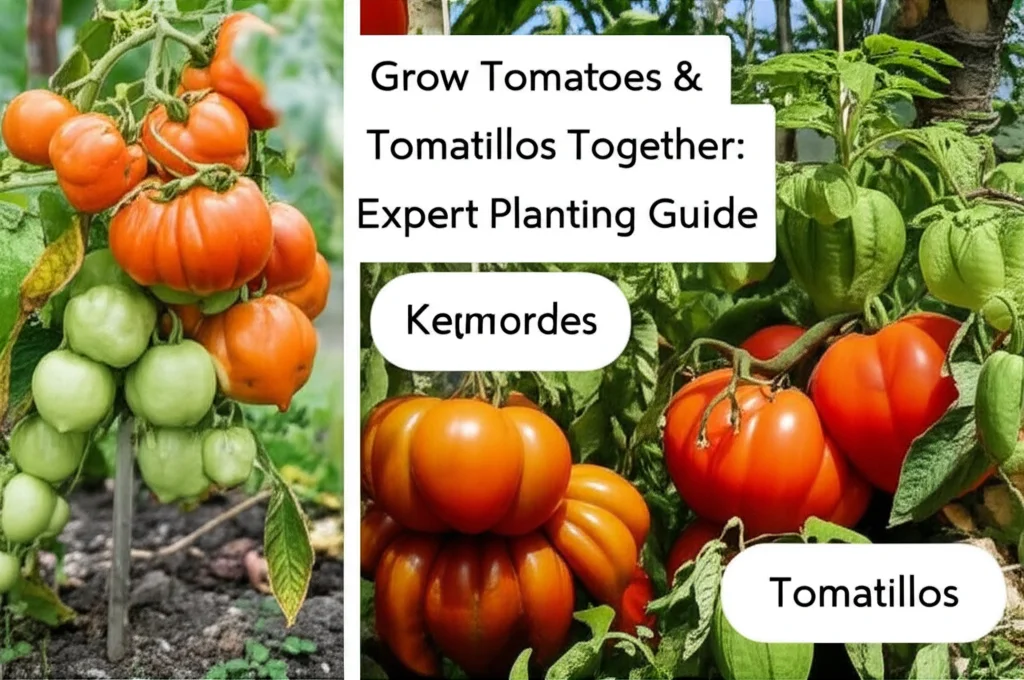This comprehensive guide explores the benefits and considerations for growing tomatoes and tomatillos together, offering expert advice on companion planting, care, and maximizing your harvest.

Tomatoes and tomatillos, both belonging to the nightshade family, can be successfully grown together with careful planning and maintenance. This guide delves into the best practices for companion planting these crops, ensuring a thriving garden and a bountiful harvest.
JUMP TO TOPIC
Companion Planting: Tomatoes and Tomatillos – A Match Made in the Garden?
Growing tomatoes and tomatillos together can be a rewarding experience, offering several advantages. Both plants share similar growing requirements, simplifying care and maintenance. Furthermore, tomatillos can act as a natural barrier against certain pests that affect tomatoes, contributing to a healthier garden ecosystem. However, it’s essential to understand the nuances of companion planting to maximize the benefits and avoid potential pitfalls.
Benefits of Growing Tomatoes and Tomatillos Together
Similar Growing Conditions: Both tomatoes and tomatillos thrive in warm, sunny conditions with well-drained soil, simplifying watering and fertilization schedules.
Pest Control: Tomatillos possess a sticky residue that can deter certain pests, acting as a natural defense mechanism for nearby tomato plants.
Space Optimization: By strategically interplanting tomatoes and tomatillos, you can maximize space utilization in your garden, especially beneficial for smaller gardens.
Enhanced Flavor Profiles: Some gardeners believe that companion planting can positively influence the flavor of both crops, leading to tastier tomatoes and tomatillos.
Potential Challenges and Solutions
Competition for Resources: Both crops require ample nutrients and water. Ensure proper spacing and regular fertilization to prevent competition and stunted growth. Amend your soil with compost and consider using a balanced fertilizer.
Overcrowding: Overcrowding can limit airflow and increase the risk of fungal diseases. Follow recommended spacing guidelines and prune both plants regularly to maintain optimal airflow.
Cross-Pollination: While cross-pollination between tomatoes and tomatillos is generally not a significant concern, it’s best to maintain some distance between different tomato varieties to prevent unintended hybridization.
Choosing the Right Varieties
Selecting the right tomato and tomatillo varieties plays a crucial role in successful companion planting. Consider factors like growth habits, maturity times, and disease resistance when making your choices.
Tomato Varieties for Companion Planting:
Determinate Tomatoes: These compact varieties are ideal for smaller gardens and are less likely to overcrowd tomatillos. Examples include Roma and Celebrity tomatoes.
Disease-Resistant Varieties: Opting for disease-resistant varieties minimizes the risk of diseases spreading between both crops.
Tomatillo Varieties for Companion Planting:
Purple Tomatillos: These varieties are known for their slightly sweeter flavor and vibrant color.
Green Tomatillos: The classic choice for salsas and sauces, green tomatillos are known for their tangy flavor.
Planting and Care Guide
Soil Preparation and Planting:
1. Amend the Soil: Prepare the soil with compost or well-rotted manure to improve drainage and fertility.
2. Spacing: Plant tomatoes and tomatillos at least 2 feet apart to allow for adequate growth. Tomatoes may require staking or caging.
3. Sunlight: Choose a location that receives at least 6-8 hours of direct sunlight per day.
Watering and Fertilizing:
Consistent Watering: Water deeply and regularly, especially during dry periods. Avoid overhead watering to prevent fungal diseases.
Balanced Fertilizer: Apply a balanced fertilizer every 2-3 weeks throughout the growing season.
Pest and Disease Management:
Monitor Regularly: Regularly inspect plants for signs of pests or diseases.
Natural Pest Control: Encourage beneficial insects like ladybugs and lacewings to help control pests.
Disease Prevention: Practice good garden hygiene, including removing fallen leaves and debris, to minimize the risk of disease.
Harvesting Tomatoes and Tomatillos
Tomatoes:
Harvest tomatoes when they reach their full color and are slightly soft to the touch.
Tomatillos:
Harvest tomatillos when the husks turn papery and the fruit fills the husk.
FAQs
Q: Can I grow tomatoes and tomatillos in containers?
A: Yes, both tomatoes and tomatillos can be grown in containers, provided they are large enough to accommodate their root systems. Choose containers that are at least 15 gallons for optimal growth.
Q: Do tomatillos need support like tomatoes?
A: While tomatillos generally don’t require staking or caging, larger varieties may benefit from some support to prevent the branches from sprawling on the ground.
Q: When is the best time to plant tomatoes and tomatillos?
A: Plant tomatoes and tomatillos after the last frost has passed and the soil has warmed up.
Conclusion
Growing tomatoes and tomatillos together can be a highly productive and rewarding gardening endeavor. By following the guidelines outlined in this guide, you can successfully cultivate both crops, maximizing your harvest and enjoying the flavorful fruits of your labor. Remember to select appropriate varieties, provide optimal growing conditions, and monitor for pests and diseases to ensure a thriving garden. Happy gardening!

